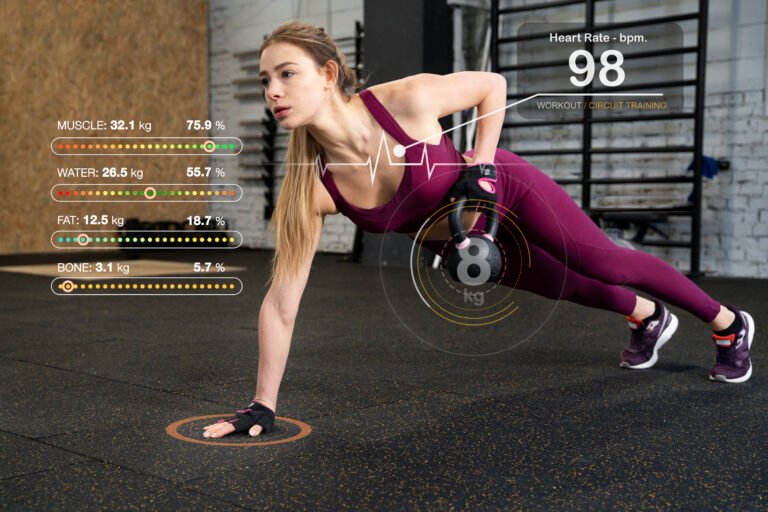If you want to be hired, promoted, or invited to speak, your work needs to speak for you — clearly, confidently, and in the formats decision-makers expect. An AI Portfolio Builder does more than assemble projects: it uses smart structuring, AI-assisted copy and visual polish, and the right tech stack so your portfolio looks professional, loads fast, and converts viewers into clients or employers.

Table of Contents
1. Start with a portfolio brief — your AI Portfolio Builder mission statement
Before you design, decide. The best portfolios have a clear purpose.
What to write (one short paragraph):
- Who is this for? (hiring manager, design director, client)
- What problem do you solve? (e.g., “I design conversion-focused landing pages for B2B SaaS.”)
- What outcomes do you deliver? (measurable results: CTR, revenue, time saved)
- What’s the ask? (hire me, commission a project, book a consult)
Example mission (pasteable):
I’m an AI Portfolio Builder for product designers: I showcase 6–8 case studies that prove I can increase activation and retention. This portfolio targets startup founders and product teams looking for a PM/UX hybrid who ships experiments fast.
Why this matters: every choice — which projects, which metrics, what imagery — should map back to that single mission statement. If an item doesn’t support it, drop it.
2. Curate — pick 6–8 high-signal case studies, not everything you ever did
Quality over quantity. Your AI Portfolio Builder should focus on impactful work.
How to select projects:
- Relevance: pick work that speaks to your target role/audience.
- Impact: prefer measurable outcomes (%, $) or clear design metrics.
- Variety: 1–2 work types (web, mobile, research) + one ambitious outlier (speculative or exploratory).
- Freshness: prioritize the last 3–4 years; keep at least one recent piece.
Portfolio lineup example:
- Growth landing page A/B test — +32% sign-ups (SaaS)
- Mobile onboarding redesign — +47% 7-day retention (consumer app)
- Analytics dashboard — reduced time-to-insight by 60% (enterprise)
- Branding + visual system — product launch (startup)
- AI prototype — generative assistant concept (experimental)
- Case study: migration to microservices — performance and cost savings (engineering)
Pro tip: each project should be convertible into a 30-, 90-, and 300-word version for different contexts (thumbnail, page, downloadable PDF).
3. Use a consistent case study formula — the AI Portfolio Builder golden template
Structure sells. Use a repeatable template so viewers can scan and understand impact fast.
AI Portfolio Builder case study template (headline → skim → deep):
- Project title + 1-line outcome (headline)
- Hero image or short demo clip (visual)
- Context (1–2 sentences): company, timeframe, team size, role.
- Problem / goal: what was at stake? (metrics help)
- Approach (process): research, decisions, tech, AI components if used — 3 bullets or steps.
- Solution (screens / prototype): annotated images, before/after comparisons, and code links if relevant.
- Result (metrics & qualitative): numbers, quotes, lessons. Include screenshots of analytics if possible.
- What I learned / next steps: short reflective note.
Example header:
Mobile Onboarding Redesign — Increased 7-day retention by 47% (A/B test, 3 months)
Why a formula? It makes your case studies scannable for busy hiring managers and consistent for visual rhythm.
4. Write outcome-first copy — show numbers before opinions
Readers decide in the first 6–10 seconds. Put outcomes up top.
AI Portfolio Builder copy rule:
- Lead with the result. If you don’t have a hard number, use a qualitative headline like “Reduced friction across checkout flow for steady conversions.”
- Use active voice and measurable verbs: increased, reduced, accelerated, cut, improved.
- Keep the value sentence to one line under the title.
Example:
Result: Reduced checkout abandonment by 28% in 6 weeks through funnel simplification and a single microcopy change.
Use AI to help here: feed your raw notes to an LLM and prompt it to produce a one-line impact summary and three possible headlines. Pick the crispest.
5. Visuals: prioritize clarity, context, and performance
Images are the heart of a portfolio. The AI Portfolio Builder must balance visual quality with load speed.
Image guidelines (technical):
- Use 2–3 hero images per case study: an overview (1200–1600 px wide), one detail crop (800–1200 px), and a mobile screenshot (360–420 px wide).
- File formats: use WebP for web (smaller size with high quality). Provide JPG/PNG fallbacks for email PDFs.
- Compression: target 60–120 KB for thumbnails, 200–400 KB for hero images (WebP). Use lossless only where color fidelity matters.
- DPI for print: 300 DPI for printed portfolio pieces; images should be at least 2000 px on the long edge for high-quality prints.
Screenshot best practices:
- Show before and after states with callouts.
- Use simple annotations (arrows, highlights) — keep text readable at small sizes.
- For interactive work, embed short looping videos (10–20s MP4) or GIFs — compress and lazy-load.
Accessibility & alt text:
- Add concise alt text (50–120 characters) describing the image and the result (e.g., “Onboarding flow before redesign — high dropoff on step 3”).
- This helps both accessibility and SEO.
6. Optimize UX & performance — your AI Portfolio Builder must load fast
A beautiful portfolio is useless if it’s slow. Performance affects SEO, recruiter patience, and conversion.
Performance checklist:
- Core Web Vitals targets: LCP (Largest Contentful Paint) < 2.5s, FID/TBT low, CLS minimal. (These are standard targets; use your analytics to track.)
- Image lazy-loading: load visible images first; lazy-load the rest.
- Use a CDN: host assets on a content delivery network to reduce latency globally.
- Minify CSS/JS: reduce render-blocking resources. Bundle JS strategically — only load interactions when required.
- Static pre-render for pages: if your site is built on a static site generator or modern headless CMS, prerender case pages.
- Cache control: aggressive caching for static assets with hashed filenames for invalidation.
Technical stack suggestions (non-prescriptive):
- Static site (Gatsby, Next.js static export) or a fast WordPress theme with caching plugins.
- Image optimization pipeline (build-time WebP generation + responsive srcset).
- Analytics: track user scroll depth, time on case study, and CTA clicks to measure engagement.
7. Use AI to accelerate production — not replace judgment
AI boosts speed and polish. Use it for drafting, alt text, thumbnails, and A/B headline generation — but keep human oversight.
Practical AI uses in an AI Portfolio Builder:
- Headline & summary generation: feed bullet points and ask for 10 headline options; pick and refine.
- Edit captions and alt text: generate concise alt text for each image automatically and then edit for accuracy.
- Thumbnail selection: give the AI three candidate images and ask for the best thumbnail based on clarity and composition (human verify).
- Transcript & demo copy: auto-generate captions and short transcripts for demo videos to improve accessibility and SEO.
- Code snippets & READMEs: create tidy code snippets and documentation from rough notes.
AI prompts to try (examples):
- “Summarize these raw notes into a one-line impact statement suitable for a case study header.”
- “Create three copy variants for a CTA that invites hiring managers to email me.”
Ethics note: don’t fabricate metrics. AI can help polish wording, but the results and numbers must be accurate and attributable.
8. Make your portfolio discoverable — SEO, social, and direct outreach
An AI Portfolio Builder works best when people can find it.
SEO basics:
- Title tags & meta descriptions: include “portfolio” and your role (e.g., “Product Designer Portfolio — [Your Name]”); keep meta descriptions 120–160 chars.
- Case study URLs: create human-readable slugs (e.g., /projects/onboarding-redesign-42pc-retention).
- Schema markup: use Article or Portfolio schema for case studies to help search engines understand content.
- Open Graph & Twitter cards: ensure each case has a unique OG image and title for social sharing.
- Sitemap & robots: include sitemap and check indexing status.
Social & outreach:
- Share each new case study on LinkedIn with a short thread outlining the problem and results. Tag collaborators.
- Create short video teasers (30–60s) for Instagram / LinkedIn that link to the full case.
- Email warm prospects with a one-line hook and a direct link to the best case for them.
Tracking:
- Use UTM tags to measure which channels drive meaningful visits and time-on-page.
9. Prepare a printable & in-person portfolio version
Digital is key, but for interviews or studio meetings a physical portfolio can still impress.
Print workflow:
- Choose 10–12 images per portfolio for a printed booklet or binder. Include a concise one-line result per spread.
- Print specs: 300 DPI, 8.5×11″ or A4, high-quality coated paper for visuals (photo paper for images), saddle-stitched or softcover binding for booklets.
- For high-end presentations, consider a hard portfolio binder with metal corners and tabbed sections (project title tabs).
- Carry a single A4 one-page case study sheet for quick handout.
Backup & transport:
- Keep a portable SSD (recommended: 1TB NVMe external drive) with full-res files and a PDF portfolio.
- Have web versions and offline PDFs on your tablet for networkless demos.
Product ideas to list later: external SSDs, portfolio binders, Canon/HP photo printers, premium photo paper, protective sleeves.
10. Add credible proof: testimonials, metrics, and source links
Numbers build trust — but so do named collaborators and links.
What to include:
- Short client or stakeholder quotes (1–2 lines) with name + role + company (with permission).
- Before/after analytics screenshots (mask sensitive numbers if needed) or a short audit image that shows uplift.
- Links to live products (if public) or staged demo environments.
Legal & privacy:
- Get permission before publishing client logos or proprietary screenshots. If in doubt, show redacted screenshots and describe the metric instead.
11. Design a clear CTA & follow-up process
Every portfolio visit should have a next step.
Common CTAs:
- “Hire me — email [address]” with a mailto link.
- “Book a 20-minute intro” — embed Calendly or an equivalent scheduler.
- “Download PDF case study” — gated by email if you want leads.
Follow-up automation:
- After a PDF download, send a short “thanks” email with 2–3 related case highlights; keep tone personal.
- Track inbound messages in a CRM or spreadsheet with date, source, and action required.
AI Portfolio Builder tip: A/B test CTA wording and placement (header, end of case study, floating button). Track click-throughs.
12. Maintain & iterate — a 30-day build plan + ongoing checklist
A portfolio is never finished — it evolves with your work and goals.
30-day AI Portfolio Builder plan (practical):
- Days 1–3: Create portfolio brief, pick 6–8 projects, gather source assets.
- Days 4–9: Draft case study copy using the golden template; generate hero images and videos.
- Days 10–14: Build site structure or install theme; add 3 case studies live. Optimize image pipeline.
- Days 15–20: Add remaining case studies, featured proofs, and testimonials. Run performance checks.
- Days 21–24: Polish About page, CV PDF, contact CTAs, and scheduling integration.
- Days 25–28: Proofread, accessibility checks, mobile QA, and social card tests.
- Days 29–30: Launch, announce on LinkedIn + Twitter, and start outreach to 5 target hires/clients.
Ongoing monthly checklist:
- Update one case study or add a micro-project.
- Check analytics for top/poor performing cases.
- Run a mini A/B headline test.
- Back up full portfolio to external SSD and cloud.
Product ideas & affiliate placeholders (add links later)
You can place affiliate links to these helpful items:
- External SSD drives (1TB+) — backup and transport high-res files.
- Premium WordPress/portfolio themes — fast, SEO-friendly templates.
- High-res camera or webcam — for hero photos and demo recordings.
- Ring light + phone tripod — for polished headshots and video demos.
- Canon or HP photo printers + premium photo paper — for printed portfolios and client leave-behind.
- Portfolio binder & sleeves — professional in-person presentation.
When you add links later, put them in a “Recommended Tools” box near the top or bottom of the article so readers can find them easily.
FAQ — fast answers for the AI Portfolio Builder
Q: How many case studies is ideal?
A: 6–8 focused, high-impact case studies are ideal. Include 1–2 smaller side projects or speculative experiments.
Q: Should I show failed projects?
A: You can include a carefully framed “failure” if it demonstrates learning and growth. Keep it honest and focused on lessons and outcomes.
Q: Which is better: hosted site or aggregator (Behance/Dribbble)?
A: Both. Own a fast personal site for SEO and professional branding; use Behance/Dribbble as amplification channels and backlinks.
Q: How do I price work shown in the portfolio?
A: Don’t post rates publicly unless you want to pre-qualify leads. Instead, use CTAs to invite the conversation and tailor quotes.
Conclusion — ship the portfolio, then iterate with data
An AI Portfolio Builder gives you a repeatable way to craft compelling, scannable, and measurable case studies that convert. Start with a clear mission, curate 6–8 high-signal projects, use the golden template for case studies, optimize images and performance, and add AI-assisted copy and thumbnails where it speeds your work. Pair an SEO-friendly site with printed leave-behinds and a measured outreach plan. Back everything up on an SSD, and iterate monthly based on analytics.






